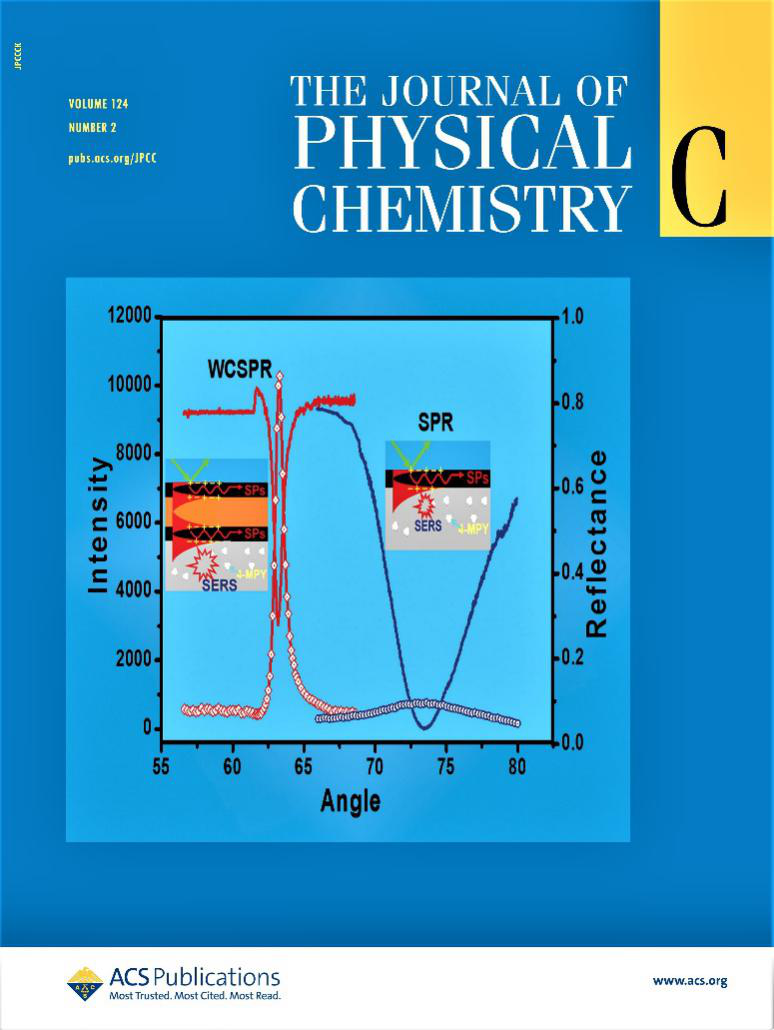Author: |
Raman spectroscopy, as a label-free, nondestructive fingerprint detection technique, has been widely used in various application fields, including trace-molecule detection, biomolecular analysis, chemical analysis, material characterization, bioassay, and archeological and criminological identification. However, normal Raman signals are too low to be detected, which limits the application of Raman spectroscopy in many fields.
In a study published in The Journal of Physical Chemistry C, a research group led by Prof. LIU Yu from Changchun Institute of Optics, Fine Mechanics and Physics (CIOMP) of the Chinese Academy of Sciences developed an angle-dependent SPR-SERS microspectrometer and proposed a bimetallic waveguide-coupled surface plasmon resonance (WCSPR) configuration to enhance Raman scattering with an evanescent field excited using surface plasmons.
The discovery of SERS brings million-fold enhancement of the Raman signals, which makes Raman spectroscopy an ultrasensitive and powerful analytical tool for use in biomolecule detection and chemical analysis. Surface plasmon Resonance (SPR) is an important mode used to enhanced the SERS signal.
To date, considerable research has been devoted to the creation and optimization of various Kretschmann-type SPR configurations to provide high electromagnetic field enhancement. These configurations include the conventional SPR configuration, the long-range SPR (LRSPR) configuration, and plasmon waveguide structures. The physical mechanisms of these configurations enhance the intensity and penetration depth of the evanescent field via SPR excitation in the vicinity of the metallic surface.
The WCSPR configuration is one type of SPR configuration composed of a K9 prism/inner Ag film/MgF2 film/outer Ag film/water five-phase Kretschmann resonance structure. Incident angle-dependent SERS spectra were measured in the evanescent field on this WCSPR configuration using an in-house-built angle-dependent SPR-SERS microspectrometer.
The SERS signal obtained under evanescent field excitation at the SPR angle was 20× higher than that collected using the conventional SPR configuration. The experimental results also proved that the waveguide-coupled surface plasmons in this evanescent field enhanced SERS spectroscopy setup had electric field penetration depth of at least 500 nm, which is longer than the penetration depth for conventional surface plasmons.
High-quality SERS signals can still be obtained after adding a 500 nm MgF2 film to the WCSPR configuration due to the deeper penetration depth. This advantage makes it possible to use Ag with a stronger electric field enhancement capability instead of an inert noble metal such as Au in the experiment without worrying about the oxidation of Ag. The enhancement factor of this WCSPR configuration was 6.2×107. The lowest detectable concentration for the SERS signal of 4-mercaptopyridine reached 1.0×10-10 M using the WCSPR configuration.
The WCSPR configuration has great potential for label-free sensing and detection of macromolecules and biomolecules. This work has also broad application prospects in plasmonic devices based on high-efficiency light harvesting and radiation.
Contact:
Author: LIU Yu
Changchun Institute of Optics, Fine Mechanics and Physics, Chinese Academy of Sciences
Changchun, Jilin 130033, China
E-mail: liuyu@sklao.ac.cn
Article links: https://pubs.acs.org/doi/abs/10.1021/acs.jpcc.9b11018

Figure 1. Schematic diagram of the SPR-SERS microspectrometer (Image by LIU Yu)

Figure 2. The Cover of the Journal (Image by LIU Yu)
